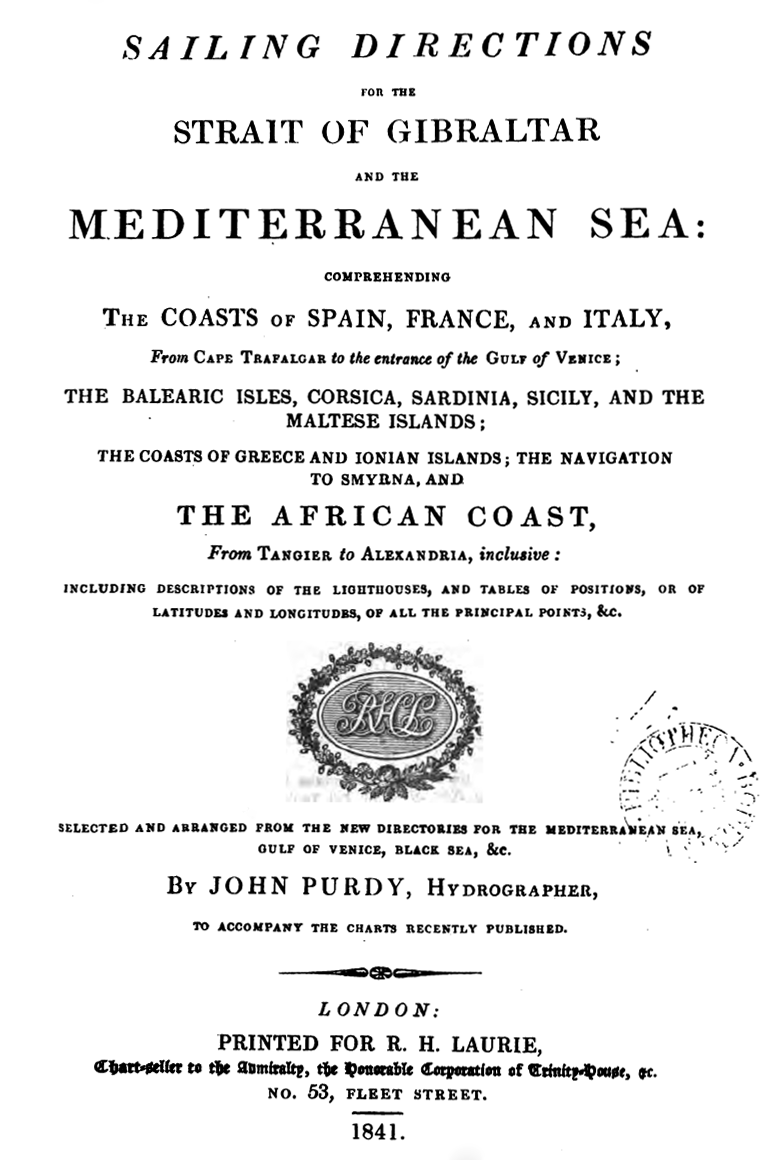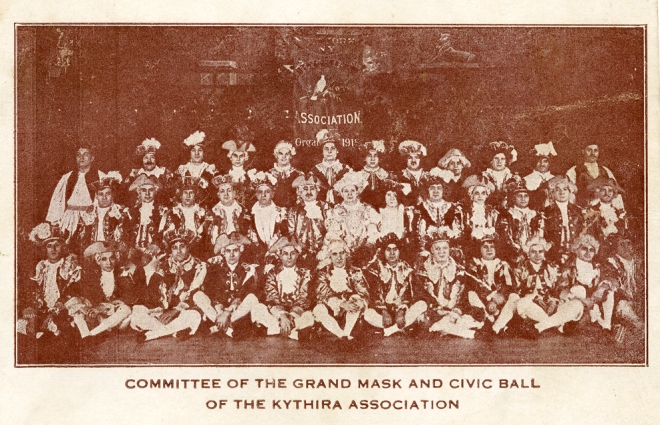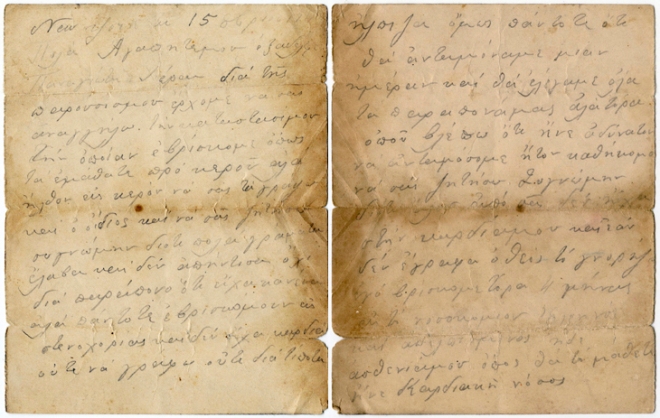Αρχική » Articles posted by johnstathatos
Author Archives: johnstathatos
Who owns the public land of Kythera?
The unique system of public land administration in effect on the island of Kythera, known as the Εγχώριος Περιουσία (Enchorios Periousia, literally “Domestic Wealth Board”) goes back to the establishment of the United States of the Ionian Islands (Ἡνωμένον Κράτος τῶν Ἰονίων Νήσων), the British protectorate which lasted from 1815 to 1864.
Since the protectorate was administered on federal principles, public land was regarded not as the legal property of central government, but as that of each individual island. When the Ionian Islands were ceded to the Kingdom of Greece 1864, it became necessary to harmonise their legislations with that of the Greek state. Under the unification law of 1866, the Domestic Wealth status of the islands was recognised, pending individual legislation for each of the seven islands. Such legislation, distributing the public land to new municipalities or regions, was passed for most of the islands – but not for Kythera, Ithaka and Paxoi.
Accordingly, the law of 1866 continued to apply, according to which the entity known as the ‘Domestic Wealth of Kythera and Antikythera’ was confirmed as “direct, exclusive and uncontested owner of all real property of whatever nature found on Kythera and Antikythera which is not demonstrably the property of individuals», [including] abandoned land, mountains, woods, the shoreline and foreshore, uninhabited islets, the entirety of the movable and real property of the Holy Pilgrimages [Monasteries] and in general every form of real estate which in other parts of the state would be regarded as Public [i.e., state owned]. The status was confirmed by the Law on Forestry Land of 1979 (N.998/1979).
Further legislation in 1984 clarified that the ‘Domestic Wealth of Kythera and Antikythera’ [hereafter Enhorios for short] “is the intercommunal property of local authorities on Kythera and Antikythera”, thereby formally conferring ownership and control of public land on the islands to the local communes (koinotites) through elected representatives.
A presidential decree (138/2004) became necessary in 2004 in order to reflect the changes in Greece’s administrative system which greatly reduced the number of small communes across the country, with Kythera’s fourteen becoming merged into today’s single municipality. Finally, the so-called Kallikratis administrative reform law of 2010 (N.3852/2010) specifies that the Enchorios Periousia of Kythera and Antikythera, now formally a Legal Public Entity (Νομικό Πρόσωπα Δημοσίου Δικαίου, ΝΠΔΔ) “continues to exert its functions according to the relevant special legislation”.
The chair and members of the Domestic Wealth Board are appointed by the current municipal government, and the board is subject to the municipality’s oversight.
Sailing Directions for Navigators in 1810

John Purdy, Mediterranean Sea Pilot, 1841 (title-page)
«To enter the Archipelago from the westward there are three ways, viz. between Cerigo and the main, between the former and Cerigotto, and between Candia and the latter of these islands. Toward the end of summer, and in the autumn, you ought always to make Cape Matapan, and, if possible, pass between Cerigo and the main: the passage is clear, and about five miles wide; (there is a small rock above water off the north end of Cerigo). By doing this, you have the advantage of being so much to windward, as the northerly and N.E. winds almost continually blow at that season.
«Χαιρετίσματα από τα Κύθηρα»: Φωτογραφικές ταχυδρομικές κάρτες και η Κυθηραϊκή αποδημία
Νικόλαος Δ. Λουράντος
Η ταχυδρομική κάρτα είναι ένα ταχυδρομικό αντικείμενο με προτυπωμένο γραμματόσημο ή ένδειξη που πληροφορεί για την προπληρωμή των ταχυδρομικών τελών πωλούμενο από τις ταχυδρομικές αρχές. Η χρήση της ως μέσο επικοινωνίας είναι φαινόμενο της ύστερης βιομηχανικής περιόδου, περί τα μέσα του 19ου αι. Αρχικά υπήρξε ένα απλό τυπωμένο κομμάτι χαρτί γρήγορα όμως η τεχνολογία επέτρεψε τη δημιουργία της φωτογραφικής ταχυδρομικής κάρτας. Η κλασική επιστολή δεν σταμάτησε να υφίσταται αλλά ο ανταγωνισμός του τηλέγραφου δημιούργησε ένα κενό για μια οικονομική και λιτή μορφή επαφής που κάλυψε η κάρτα.
«Πολλά γράμματα έλαβα και δεν απήντησα». Επιστολή Κυθηρίου μετανάστη από τη Νέα Υόρκη, 191_.
New York, 15 Φεβρ. 191[;]
Πολύ Αγαπητέ μου εξάδελφε Παναγιώτη χέραι. Δια της παρούσης μου έρχομε να σας αναγγήλω την κατάστασή μου [σ]την οποίαν ευρίσκομε όπως τα εμάθατε προ κερού αλά ήλθον εις κερόν να σας τα γράψω και ο ίδιος και να σας ζητήσω συγνώμην διότι πολά γράματα έλαβα και δεν απήντισα όχι δια παράπονο ότι είχα κανένα αλά πάντοτε εβρισκόμουν εις στεναχορίας και δεν ήχα καρδιά ούτε να γράφω ούτε δια τίποτα. Ήλπιζα όμως πάντοτε ότι θα ανταμόναμε μίαν ημέραν και θα ελέγαμε όλα τα παραπονά μας αλά τόρα οπού βλέπω ότι ήνε αδύνατον να ανταμόσομε ήτον καθήκον μου να σας ζητήσω Συγνώμην διότι άλους από σας δεν έχω στην καρδιά μου και εάν δεν έγραφα ο θεός το γνορίζει.
“The many letters I received but never answered”. Letter of a Kytherian immigrant from New York, 191_.
New York, 15 February 191[?]
Dearly beloved cousin Panayoti, I greet you. I take this opportunity of informing you of my present circumstances about which you have already heard. But it is now time for me to write to you myself and beg your forgiveness for the many letters I received but never answered. Not because I had any cause for complaint but because I was always in low spirits having no heart to write or for anything else. Nevertheless I always hoped that someday we would meet and tell each other our woes, but now that I see such a meeting is impossible it is my duty to beg your forgiveness. Because apart from yourselves I have no others in my heart and god knows of it even if I never wrote.
Τα πρώτα ταχυδρομικά δελτάρια των Κυθήρων
Σε αντίθεση με άλλα, πολυπληθέστερα και ποιό κοσμοπολίτικα νησιά, τα Κύθηρα σπάνια αντιπροσωπεύονται στις σειρές εικονογραφημένων ταχυδρομικών δελταρίων των αρχών του 20ου αιώνα. Στις 12 σειρές που κυκλοφόρησε η Ελληνική Ταχυδρομική Υπηρεσία από το 1901 μέχρι το 1903 (384 συνολικά δελτάρια) δεν συμπεριλαμβάνεται ούτε μια εικόνα από τα Κύθηρα. Με το άνοιγμα της αγοράς, ακολούθησαν δύο μεγάλες σειρές που εξέδωσαν τα τυπογραφεία Πάλλη & Κοτζιά και Ελευθερουδάκη, σημαντικά ανώτερες ποιοτικά όσο και καλλιτεχνικά.
Who We Are
By the first decade of the 20th century, photography in various guises had become commonplace for the urban sophisticates of the larger Greek cities and towns; in the hands of the more prosperous classes it even became a popular hobby, leading in some cases, such as that of Mary Paraskeva, the daughter of Crimean millionaire Ioannis Griparis, to a substantial and valuable body of work. In the countryside, however, many people had never as yet seen themselves portrayed in a photograph; to do so was still a rare, even an uncanny experience. Even once it became feasible, perhaps after a professional photographer set up shop somewhere reasonably accessible, photographic portraiture was limited to a very few of life’s major milestones: birth sometimes, certainly if at all possible marriage, and the inevitable group photograph of parents, grandparents and children. An additional spur was provided by immigration; in many of the poorer regions of Greece, men would emigrate on their own, return if successful to get married and father a child, and then leave again for perhaps many years at a time, leaving mother and children behind. In such cases, there would be a steady demand for portraits of wives, growing children and aging parents.
 Such was the case on the remote Ionian island of Kythera, where in 1920, Panayotis Fatseas opened a photographic studio in the little market town of Livadi; he had returned from a two years’ residence in New York on the outbreak of the Balkan War, bringing with him a camera, one of the first on the island. Over the next eighteen years, he photographed most of the people in the south of the island; the main source of demand for his work is identifiedd by an advertisement he published in the local press, emphasising that ‘orders can be accepted directly from America and Australia for portraits of the relatives of immigrants’.
Such was the case on the remote Ionian island of Kythera, where in 1920, Panayotis Fatseas opened a photographic studio in the little market town of Livadi; he had returned from a two years’ residence in New York on the outbreak of the Balkan War, bringing with him a camera, one of the first on the island. Over the next eighteen years, he photographed most of the people in the south of the island; the main source of demand for his work is identifiedd by an advertisement he published in the local press, emphasising that ‘orders can be accepted directly from America and Australia for portraits of the relatives of immigrants’.
Μεγάλη Μασκαράτα του Κυθηραϊκού Συνδέσμου Νέας Υόρκης, δεκαετία 1920
 Αγνώστου φωτογράφου: Η Οργανωτική Επιτροπή του Κοινοτικού Χορού και της Μεγάλης Μασκαράτας του Κυθηραϊκού Συνδέσμου, αχρονολόγητη. Κυθηραϊκό Φωτογραφικό Αρχείο, KPA 00116.
Αγνώστου φωτογράφου: Η Οργανωτική Επιτροπή του Κοινοτικού Χορού και της Μεγάλης Μασκαράτας του Κυθηραϊκού Συνδέσμου, αχρονολόγητη. Κυθηραϊκό Φωτογραφικό Αρχείο, KPA 00116.
Στο λάβαρο πίσω από τους εικονιζόμενους διαβάζουμε “NEW YORK KYTHIRA ASSOCIATION, Organised 1919 [1918?]”. Πρόκειται για λιθογραφική αναπαραγωγή σε ελαφρύ χαρτί, που ίσως αποτελούσε μέρος προγράμματος ή αναμνηστικής δημοσίευσης. Παραδόξως, τα μέλη της πολυπληθούς οργανωτικής επιτροπής είναι όλα ενδεδυμένα φορεσιές αυλικών του 18ου αιώνα, με εξαίρεση δύο τσολιάδες στα δεξιά και αριστερά της πίσω γραμμής.
(Το πρωτότυπο αποτελεί μέρος της Συλλογής Μιχαήλ Τσαγκάρη, Αθήνα).
Ελιά: η έκθεση, το βραβείο και οι έπαινοι
Προχθες, Σάββατο 2 Μαΐου, έγιναν με επιτυχία τα εγκαίνια της έκθεσης «Ελιά, το ευλογημένο δένδρο» στον Κυθηραϊκό Σύνδεσμο. Το Βραβείο του Δήμου Κυθήρων απέσπασε ο καταξιωμένος Χανιώτης φωτογράφος Μιχάλης Κουλιέρης, γνωστός μας από τη συμμετοχή του στην έκθεση «Τοπία του ονείρου» στις Φωτογραφικές Συναντήσεις Κυθήρων 2010, αλλά και από τη συχνή παρουσία του στις ΦΣΚ. Στην έκθεση συμμετείχαν από παιδιά των Β’ και Γ’ τάξεων του δημοτικού σχολείου Καρβουνάδας μέχρι τον ενενήντα τριών ετών παλαίμαχο Κυθήριο φωτογράφο Μανώλη Φατσέα. Έπαινοι απονεμήθηκαν στους Μιχάλη Πετρόπουλο, Anita Snippe, Μιχάλη Πρωτοψάλτη, Φοίβο Τσαραβόπουλο, Jean Marie Stratigos και στα παιδιά του δημοτικού.
Η έκθεση στον Κυθηραϊκό Σύνδεσμο θα είναι ανοιχτή για το κοινό μέχρι τις 10 Μαΐου (ώρες 6.30-8.30 μμ), θα παραμείνει όμως εγκατεστημένη μέχρι την επίσκεψη του Προέδρου της Δημοκρατίας Προκόπη Παυλόπουλου στις 21 Μαΐου. Σε δεύτερη φάση, η έκθεση θα παρουσιασθεί στο Μερκάτο Χώρας, από 1 Ιουλίου μέχρι 8 Αυγούστου (ώρες 9 πμ – 9 μμ).
Επιλογή των φωτογραφιών της έκθεσης έχει αναρτηθεί στο φωτογραφικό αρχείο του Τριπέλαγου, στην κατηγορία «Ελιά & ελαιοπαραγωγή».






